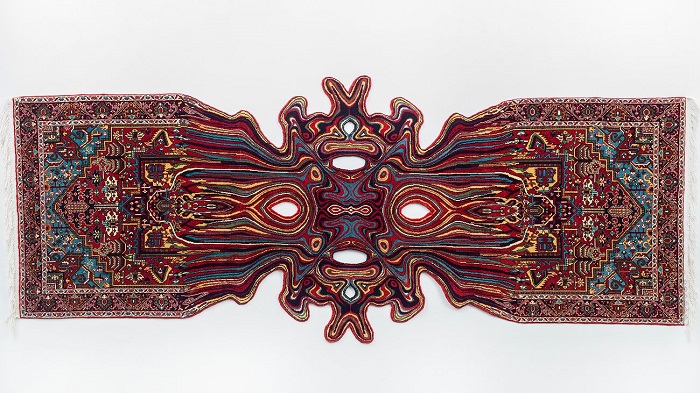One day when Faig Ahmed was seven, his parents left him in his bedroom to play on the rug, a family heirloom that had belonged to his mother’s grandmother. Ahmed was tracing patterns in the carpet, his fingers searching for a way to travel from the border to the centre – the whole design seemed to him a labyrinth. Then he had a brainwave. He fetched a large pair of scissors and cut off the border “to make it easier”. Once he started, it was hard to stop. He cut the rug into more and more pieces, “took a pattern from here and moved it there”.
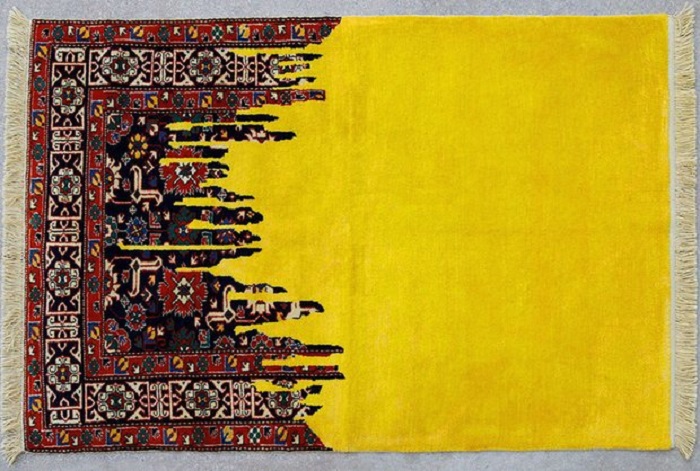
When his parents checked on him, the rug was unrecognisable. Soon after, rugs that had previously covered the floors and walls disappeared from his family home in Baku, Azerbaijan.
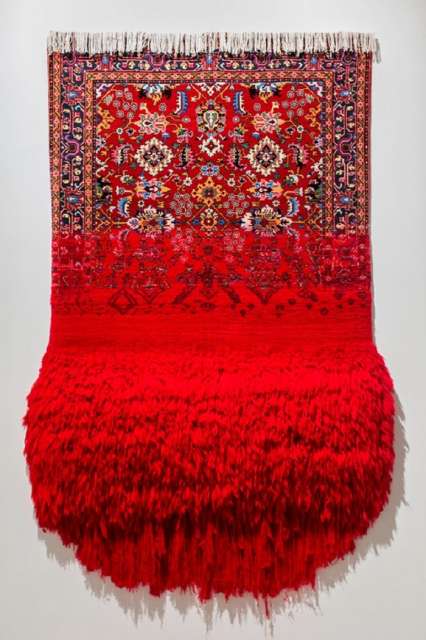
Now, at 33, Ahmed’s carpet art – in which he distorts traditional designs – is coveted around Europe and the US (less so in Baku), where pieces sell for upwards of $15,000 (£11,870). Typically, they begin as a classic pattern that encounters an obstacle or glitch, a sort of technical meltdown. So, the conventional tessellations of Oiling (2012), for instance, melt into a multicolour swirl, and the blue palette of De-stabilization (2016) peels into strips of a different rug altogether, an interloper. Another design is pixelated. The effect is curiously disorienting.
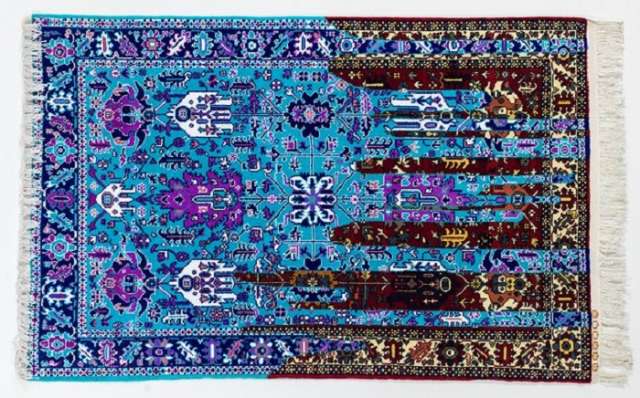
Carpets have a history of being used for political expression; one US website, warrug.com, collates Pakistani and Afghan rugs with military motifs, for instance. But Ahmed sees rugs as “something very stable. Carpet is the result of ages. Even 2,500 years ago there were similar patterns, similar techniques to today. The centre and the borders are like a social structure, giving the idea of everything we know.”
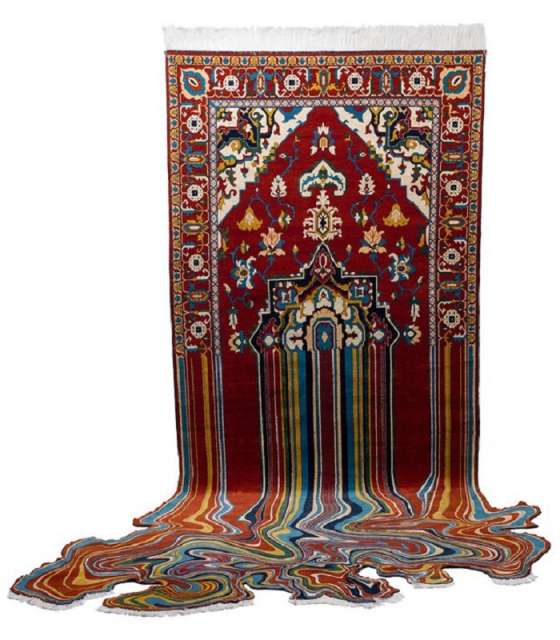
Maybe growing up in Azerbaijan in the 90s – moving from city to city because “it was a bad situation, USSR was broken up, it was not an easy time” – helped to tilt the emphasis of his work, because he relentlessly throws settled structures into chaos, and explores how the two ideas live together. The surprise is that the results are beautiful and persuasively coherent.
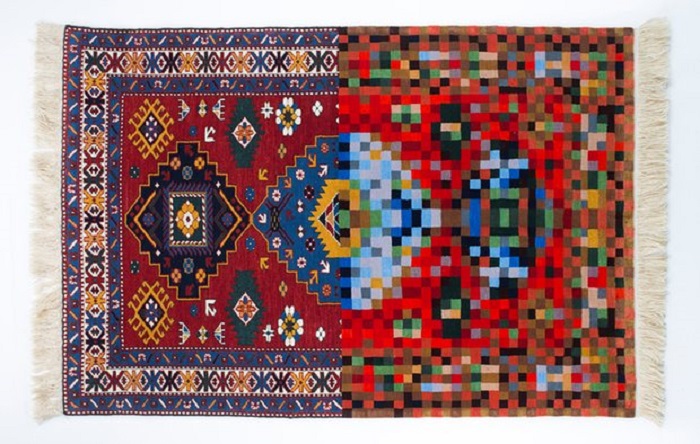
According to Ahmed, this is basically quantum physics in carpet form. Which sounds a bit fanciful – until he points out that each knot is just a kind of pixel, and that long ago carpets were as important “as our smartphones, used by shamans to jump to subconsciousness or parallel worlds”.
Unlike traditional floor rugs, Ahmed’s rugs are intended to adorn walls – like the art form they are.
/TheGuardian/








